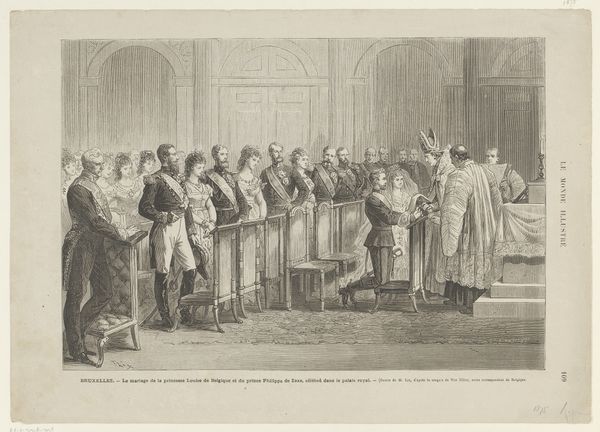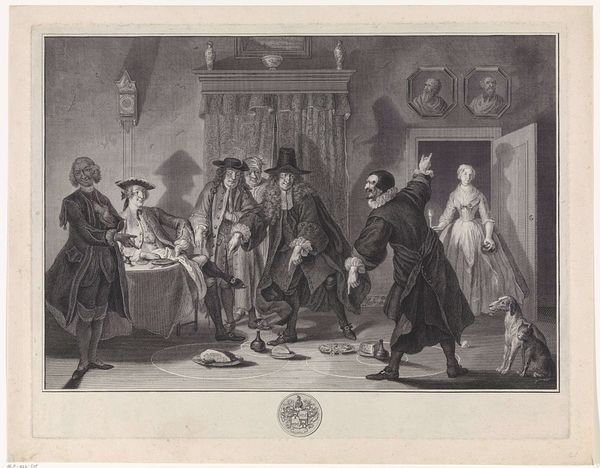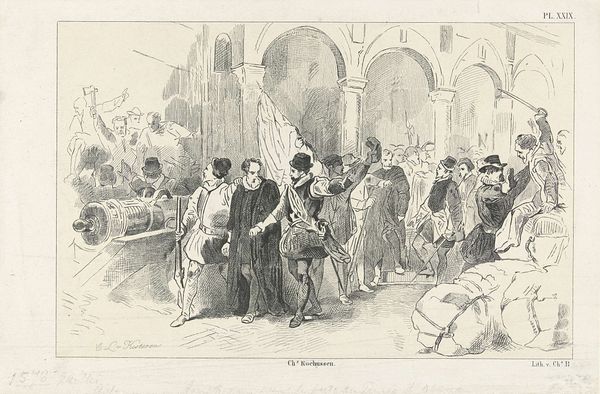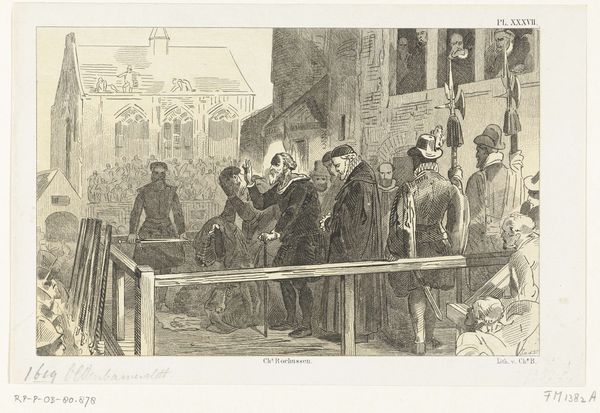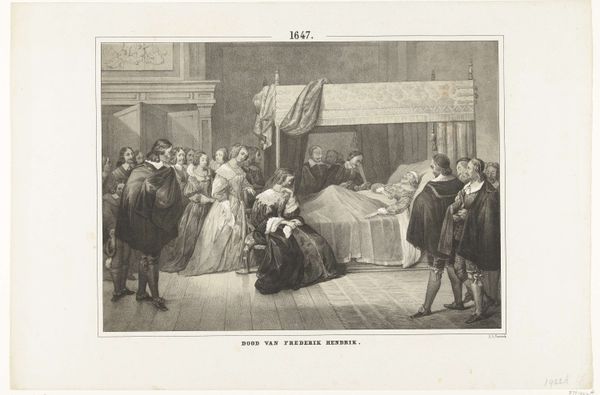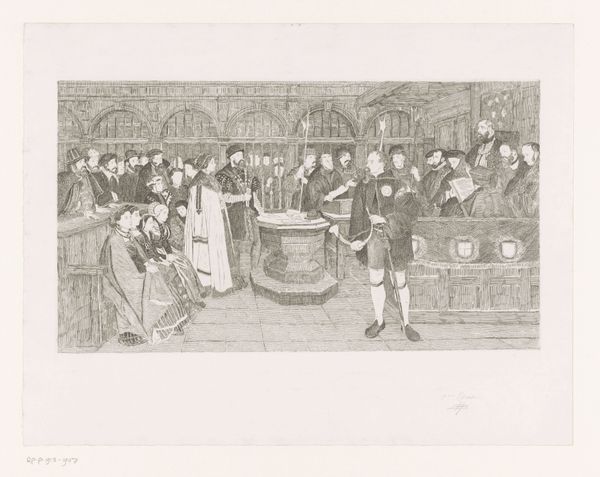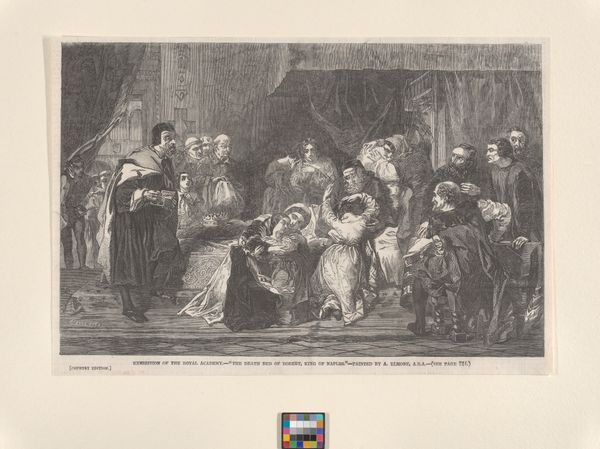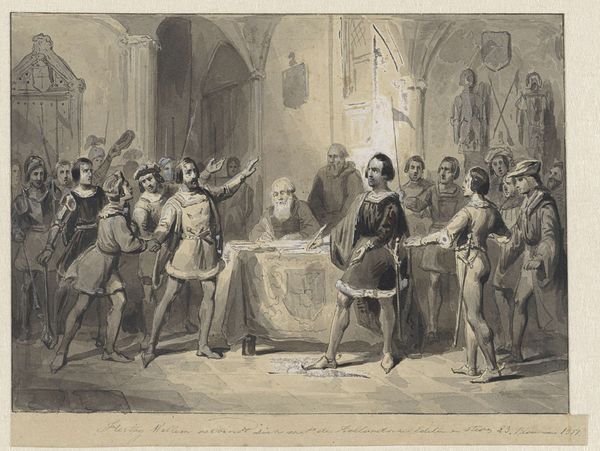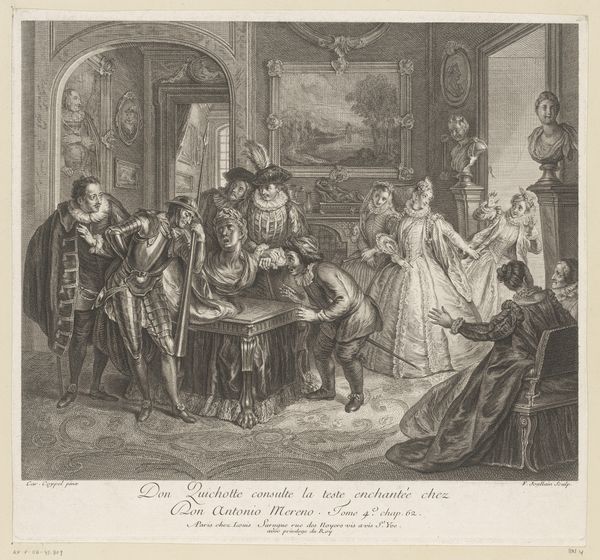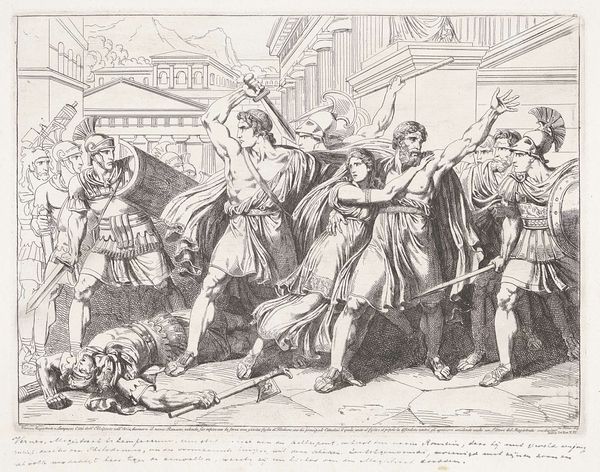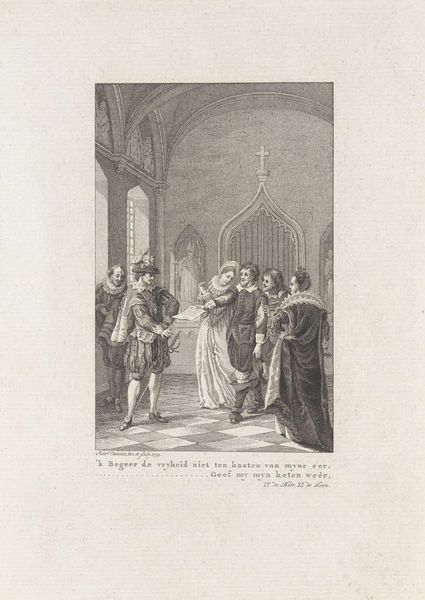
Het aanbieden van het Smeekschrift aan de hertogin van Parma, 1566 1853 - 1860
0:00
0:00
janvanderprentmakerveen
Rijksmuseum
print, engraving
#
narrative-art
# print
#
genre-painting
#
history-painting
#
engraving
#
realism
Dimensions: height 160 mm, width 238 mm
Copyright: Rijks Museum: Open Domain
Editor: So, here we have "The Presentation of the Petition to the Duchess of Parma, 1566," an engraving made sometime between 1853 and 1860 by Jan van der Veen. It's a really detailed scene, quite formal, with lots of figures. I’m struck by the contrast between the supplicants and the Duchess enthroned; it seems to capture a power dynamic pretty clearly. What do you see in this piece? Curator: I see the engraving not just as a historical representation, but as a product of its own time, the mid-19th century. The choice of engraving, a readily reproducible medium, speaks to a desire for broad distribution of this historical narrative. What were the social implications of mass producing and circulating this image? Editor: That's interesting. I hadn't thought about the printmaking process itself as being so important to its meaning. You mean, who could access the image, and how it might have shaped public opinion at the time? Curator: Precisely. Consider also the labour involved. Engraving is meticulous, time-consuming work. By focusing on the *making* of this image, the *materiality* of it, we move away from simply seeing it as a window into the past. How might this level of detail also function as propaganda or promotion of particular perspectives? Editor: So, looking at it as more than just a depiction, and instead thinking about who made it, how they made it, and who it was *for*. That changes the way I see the artwork significantly. Thank you. Curator: Exactly. Seeing art as a product, as labor, allows us to consider its impact in the social and economic spheres, offering insight into its power far beyond just aesthetics.
Comments
No comments
Be the first to comment and join the conversation on the ultimate creative platform.
